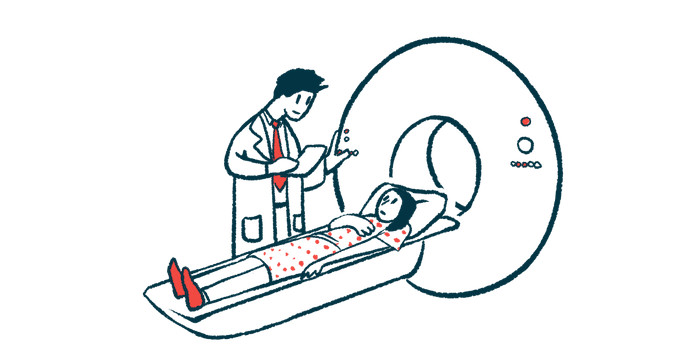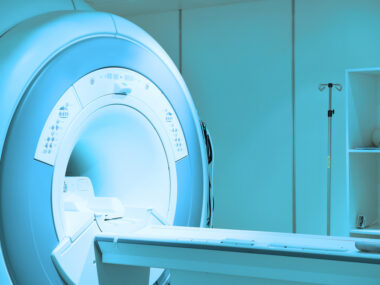Computer-analyzed CT Scans May Help With Early IPF Intervention
Data-driven texture analysis of CT scans can predict lung function decline
Written by |

The risk of future lung-function decline and mortality in people with idiopathic pulmonary fibrosis (IPF) can be accurately predicted by a deep learning computer algorithm that evaluates CT scans, a study shows.
Accurately determining the risk of progression would support early intervention before irreversible damage has occurred, the researchers noted. These findings also provide the foundation to evaluate other progressive fibrosing lung diseases in the future.
The study, “Quantitative computed tomography predicts outcomes in idiopathic pulmonary fibrosis,” was published in the journal Respirology.
What is the purpose of CT scans in IPF?
CT scans of the chest can help diagnose IPF, a condition characterized by progressive scarring, or fibrosis, of lung tissue. However, predicting the course of IPF progression by lung CT scans can be challenging due to discrepancies in visual assessments by different examiners.
Using computer algorithms to objectively assess CT scans has shown promise in IPF. One method, called data-driven texture analysis (DTA), applies deep learning computer programs to automatically detect and quantify lung fibrosis using CT scans.
Previously, researchers at National Jewish Health in Colorado showed the extent of fibrosis measured by DTA was associated with poorer lung function and that increasing DTA scores (more fibrosis) on subsequent CT scans were linked to further lung function decline.
In the new study, the team evaluated the predictive value of DTA using data from a large group of IPF patients with available lung CT scans who were part of an Australian IPF registry.
The researchers identified 268 male and 125 female patients, with a median age of 69.6 years, who were followed for a median of 2.7 years. Among them, up to 245 had lung function tests within 90 days of the CT scans (baseline).
Assessed lung function parameters included forced vital capacity (FVC) — the total amount of air that a person can forcibly exhale after a deep breath — diffusing capacity for carbon monoxide (DLCO), the lungs’ ability to transfer oxygen to the bloodstream, and the composite physiologic index (CPI), the combined effect of each parameter.
The deep learning computer algorithm was first trained using normal and abnormal sections of CT scans. Then, fibrosis-related DTA scores were calculated from participant scans. Evaluated outcomes included transplant-free survival and progression-free survival, which was defined as the time between a patient’s first CT scan to marked lung function decline (FVC decline of 10% or more, or DLCO decline of 15% or more), transplant, or death.
Among the 245 patients with a recent FVC evaluation, 128 had normal lung function, defined as an FVC of more than 80%. These patients had a median DTA score of 25.0 compared with the whole group’s median DTA of 31.9.
Initial analysis revealed that all CT-based measures correlated with FVC, DLCO, and CPI across all participants with lung function tests performed within 90 days of their CT scan.
When comparing transplant-free survival and progression-free survival across the whole group over time, DTA scores, which measured fibrosis at baseline, separated patients into four risk groups. Even when the data were limited to those with normal FVC, these thresholds in DTA score still divided the population into different risk groups.
Modeling analysis then showed that the baseline DTA score was significantly associated with the annual rate of lung function decline, as assessed by FVC and DLCO.
To determine the predictive value of DTA, models were created after adjusting data for age, gender, body fat content, smoking history, and the use of anti-fibrotic therapies. DTA was found to be a significant predictor of transplant-free survival, as well as progression-free survival. Again, DTA remained an independent outcome predictor even in those with normal FVC.
“In this study, we demonstrate the capability of DTA at baseline CT to determine the risk of future disease progression in IPF,” the researchers wrote. “Accurately defining the risk of fibrotic disease progression at baseline would enable earlier institution of anti-fibrotic therapy before irreversible progression has occurred.”
“By demonstrating the ability of DTA to stratify the risk of disease progression at baseline in IPF, we provide the foundations for future evaluation in other progressive fibrosing lung diseases,” they added.








